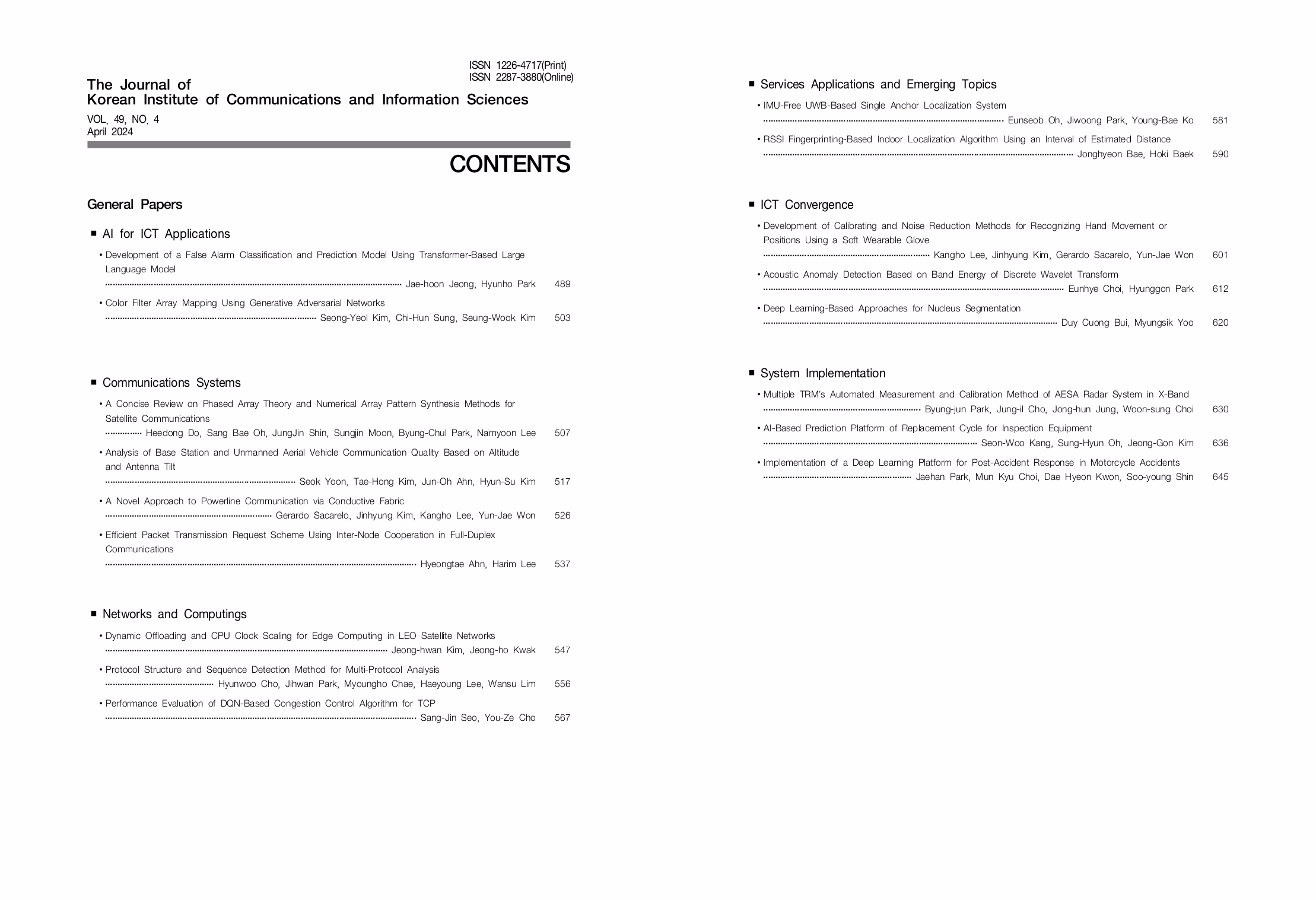Performance Evaluation of DQN-Based Congestion Control Algorithm for TCP
Vol. 49, No. 4, pp. 567-580, Apr. 2024
 10.7840/kics.2024.49.4.567
10.7840/kics.2024.49.4.567
PDF Full-Text
Abstract
Statistics
Cumulative Counts from November, 2022
Multiple requests among the same browser session are counted as one view. If you mouse over a chart, the values of data points will be shown.
Multiple requests among the same browser session are counted as one view. If you mouse over a chart, the values of data points will be shown.
|
|
Cite this article
[IEEE Style]
S. Seo and Y. Cho, "Performance Evaluation of DQN-Based Congestion Control Algorithm for TCP," The Journal of Korean Institute of Communications and Information Sciences, vol. 49, no. 4, pp. 567-580, 2024. DOI: 10.7840/kics.2024.49.4.567.
[ACM Style]
Sang-Jin Seo and You-Ze Cho. 2024. Performance Evaluation of DQN-Based Congestion Control Algorithm for TCP. The Journal of Korean Institute of Communications and Information Sciences, 49, 4, (2024), 567-580. DOI: 10.7840/kics.2024.49.4.567.
[KICS Style]
Sang-Jin Seo and You-Ze Cho, "Performance Evaluation of DQN-Based Congestion Control Algorithm for TCP," The Journal of Korean Institute of Communications and Information Sciences, vol. 49, no. 4, pp. 567-580, 4. 2024. (https://doi.org/10.7840/kics.2024.49.4.567)
Vol. 49, No. 4 Index



